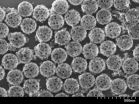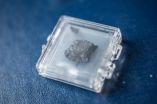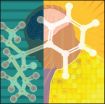(Press-News.org) A study conducted by the University of Granada has scientifically proven that alcohol consumption markedly impairs night-vision because it increases the perception of halos—luminous circles—and other visual night-time disturbances. Moreover, this deterioration of vision is significantly greater in subjects with breath alcohol content in excess of 0.25mg/litre—the legal limit for driving in Spain and other countries and, also, that recommended by the World Health Organization (WHO).
Researchers from the Laboratory of Vision Sciences and Applications conclude that alcohol deteriorates the optical quality of the image we see because, among other things, it disturbs the tear-film that covers the surface of the eye. Essentially, this is because ethanol from alcoholic drinks passes into the tear and disturbs the outermost layer of the tear-film—the lipid layer—facilitating the evaporation of the aqueous part of the tear. In an eye with a deteriorated tear-film, the quality of the image that forms in the retina also deteriorates, as the study shows.
In a recently-published article in the international Journal of Ophthalmology, the authors evaluate retina-image quality and night-vision performance following alcohol consumption in a sample of 67 subjects. These volunteers had their breath alcohol content measured with an evidential breath-alcohol analyser, supplied by the traffic division of the Spanish Civil Guard in Granada. The participants consumed different quantities of a prize-winning wine from the Pago de Almaraes wineries, S.L. Benalúa de Guadix, Granada, winner of the International Challenge du Vin de Bordeaux.
"Halometer" measurements
To assess visual performance in low-illumination conditions, the researchers used a visual test known as a "halometer", developed in the Laboratory. This enabled them to quantify the level of night-vision disturbance in the form of, say, halos around bright lights, perceived by the subjects.
The results showed that following alcohol consumption, the perception of halos and other night-time visual disturbances increases and the optical quality of the image the eye produces deteriorates. This is more marked in subjects with a breath alcohol content level over the legal limit for driving, that is, in excess of 0.25mg/l.
Principal author of the study,UGR lecturer José Juan Castro, explains that "this research offers results of value to society and public healthcare, especially in relation to night-time driving. Alcohol consumption and low-illumination conditions are factors present in many traffic accidents, hence people must to be made aware of the effects of alcohol consumption, especially on vision".
In fact, under these conditions, the perception of visual halos can make it difficult for drivers to see a pedestrian crossing the road, to distinguish a traffic sign, or they could be dazzled in some way by the headlights of another car coming towards them.
INFORMATION:
Research at Granada finds that the eye's optical quality deteriorates after alcohol consumption
Ethanol in the tear-film is one of the causes: It covers the surface of the eye, disturbs the outer layer and favours evaporation of the aqueous content of the tear, deteriorating the optical quality of the image we see
2014-06-17
ELSE PRESS RELEASES FROM THIS DATE:
Does the moon affect our sleep?
2014-06-17
Popular beliefs about the influence of the moon on humans widely exist. Many people report sleeplessness around the time of full moon. In contrast to earlier studies, scientists from the Max Planck Institute of Psychiatry in Munich did not observe any correlation between human sleep and the lunar phases. The researchers analyzed preexisting data of a large cohort of volunteers and their sleep nights. Further identification of mostly unpublished null findings suggests that the conflicting results of previous studies might be due to a publication bias.
For centuries, people ...
How does a tree know it's time to grow again?
2014-06-17
Winter takes its toll on living things. To protect themselves from the elements, bears hibernate, and trees go dormant. Biologists have observed what happens when trees become dormant, but up to now, they haven't understood the underlying genetic mechanisms that enable them to start growing again.
Led by molecular geneticists from Michigan Technological University a gene has been identified and characterized that tells a poplar tree when winter ends and a spring growing season begins. Victor Busov, a professor in Michigan Tech's School of Forest Resources and Environmental ...
Long-term study suggests ways to help children learn language and develop cognitive skills
2014-06-17
Examining factors such as how much children gesture at an early age may make it possible to identify and intervene with very young children at risk for delays in speech and cognitive development, according to a new study by researchers at the University of Chicago.
The research by leading early learning scientists looked at children from a wide variety of backgrounds, including those from advantaged and disadvantaged families, and those who had suffered brain injury. Their work was published in an article, "New Evidence About Language and Cognitive Development Based on ...
Nanoshell shields foreign enzymes used to starve cancer cells from immune system
2014-06-17
Nanoengineers at the University of California, San Diego have developed a nanoshell to protect foreign enzymes used to starve cancer cells as part of chemotherapy. Their work is featured on the June 2014 cover of the journal Nano Letters.
Enzymes are naturally smart machines that are responsible for many complex functions and chemical reactions in biology. However, despite their huge potential, their use in medicine has been limited by the immune system, which is designed to attack foreign intruders. For example, doctors have long relied on an enzyme called asparaginase ...
Gene 'switch' reverses cancer in common childhood leukaemia
2014-06-17
Melbourne researchers have shown a type of leukaemia can be successfully 'reversed' by coaxing the cancer cells back into normal development.
The discovery was made using a model of B-progenitor acute lymphoblastic leukaemia (B-ALL), the most common cancer affecting children.
Researchers from the Walter and Eliza Hall Institute showed that switching off a gene called Pax5 could cause cancer in a model of B-ALL, while restoring its function could 'cure' the disease.
Institute researchers Dr Ross Dickins and Ms Grace Liu led the study with institute colleagues and ...
E-cigs heavily marketed on Twitter, study finds
2014-06-17
E-cigarettes, also known as vaping pens or e-hookas, are commonly advertised on Twitter and the tweets often link to commercial websites promoting e-cig use, according to University of Illinois at Chicago researchers.
The study, published as a special supplement in the July 2014 issue of Tobacco Control released online June 16, has implications for future FDA regulations on the marketing of e-cigarettes and related products.
"There's this whole wild west of social media platforms – Facebook, Twitter and Instagram – and the FDA has no way to track what's happening in ...
Soft-drink tax worth its weight in lost kilos
2014-06-17
A tax on sweetened soft drinks could be an effective weapon in the war against obesity, generating weight losses of up to 3.64 kilograms as individuals reduce their consumption.
Researchers from Monash University, Imperial College London and University of York and Lancaster University, England have estimated the extent to which drinking habits would change if beverages such as carbonated non-diet soft drinks; cordials and fruit drinks were taxed.
Lead author Dr Anurag Sharma, of the Centre for Health Economics at Monash University, said such a tax could have important ...
Solar photons drive water off the moon
2014-06-17
Water is thought to be embedded in the moon's rocks or, if cold enough, "stuck" on their surfaces. It's predominantly found at the poles. But scientists probably won't find it intact on the sunlit side.
New research at the Georgia Institute of Technology indicates that ultraviolet photons emitted by the sun likely cause H2O molecules to either quickly desorb or break apart. The fragments of water may remain on the lunar surface, but the presence of useful amounts of water on the sunward side is not likely.
The Georgia Tech team built an ultra-high vacuum system that ...
Researchers identify new compound to treat depression
2014-06-17
There is new hope for people suffering from depression. Researchers have identified a compound, hydroxynorketamine (HNK), that may treat symptoms of depression just as effectively and rapidly as ketamine, without the unwanted side effects associated with the psychoactive drug, according to a study in the July issue of Anesthesiology, the official medical journal of the American Society of Anesthesiologists® (ASA®). Interestingly, use of HNK may also serve as a future therapeutic approach for treating neurodegenerative disorders such as Alzheimer's and Parkinson's diseases, ...
Surgical patients more likely to follow medication instructions
2014-06-17
A study in the July issue of Anesthesiology revealed that patients who receive a simple, multicolor, standardized medication instruction sheet before surgery are more likely to comply with their physician's instructions and experience a significantly shorter post-op stay in recovery. These findings are important because surgical patients often fail to follow their doctor's medication instructions for preexisting conditions such as diabetes and hypertension on the day they are having surgery – a costly mistake that can lead to surgery cancellation, complications and longer ...
LAST 30 PRESS RELEASES:
Norbert Holtkamp appointed director of Fermi National Accelerator Laboratory
New agentic AI platform accelerates advanced optics design
Biologists discover neurons use physical signals — not electricity — to stabilize communication
Researchers discover that a hormone can access the brain by hitchhiking
University of Oklahoma researcher awarded funding to pursue AI-powered material design
Exploring how the visual system recovers following injury
Support for parents with infants at pediatric check-ups leads to better reading and math skills in elementary school
Kids’ behavioral health is a growing share of family health costs
Day & night: Cancer disrupts the brain’s natural rhythm
COVID-19 vaccination significantly reduces risk to pregnant women and baby
The role of vaccination in maternal and perinatal outcomes associated with COVID-19 in pregnancy
Mayo Clinic smartwatch system helps parents shorten and defuse children's severe tantrums early
Behavioral health spending spikes to 40% of all children’s health expenditures, nearly doubling in a decade
Digital cognitive behavioral treatment for generalized anxiety disorder
Expenditures for pediatric behavioral health care over time and estimated family financial burden
Air conditioning in nursing homes and mortality during extreme heat
The Alps to lose a record number of glaciers in the next decade
What makes a good proton conductor?
New science reporting guide published for journalists in Bulgaria
New international study reveals major survival gaps among children with cancer
New science reporting guide published for journalists in Turkey
Scientists develop a smarter mRNA therapy that knows which cells to target
Neuroanatomy-informed brain–machine hybrid intelligence for robust acoustic target detection
Eight SwRI hydrogen projects funded by ENERGYWERX
The Lundquist Institute and its start-up company Vitalex Biosciences Announces Strategic Advancement of Second-Generation fungal Vaccine VXV-01 through Phase 1 Trials under $40 Million Competitive Con
Fine particles in pollution are associated with early signs of autoimmune disease
Review article | Towards a Global Ground-Based Earth Observatory (GGBEO): Leveraging existing systems and networks
Penn and UMich create world’s smallest programmable, autonomous robots
Cleveland researchers launch first major study to address ‘hidden performance killer’ in athletes
To connect across politics, try saying what you oppose
[Press-News.org] Research at Granada finds that the eye's optical quality deteriorates after alcohol consumptionEthanol in the tear-film is one of the causes: It covers the surface of the eye, disturbs the outer layer and favours evaporation of the aqueous content of the tear, deteriorating the optical quality of the image we see







